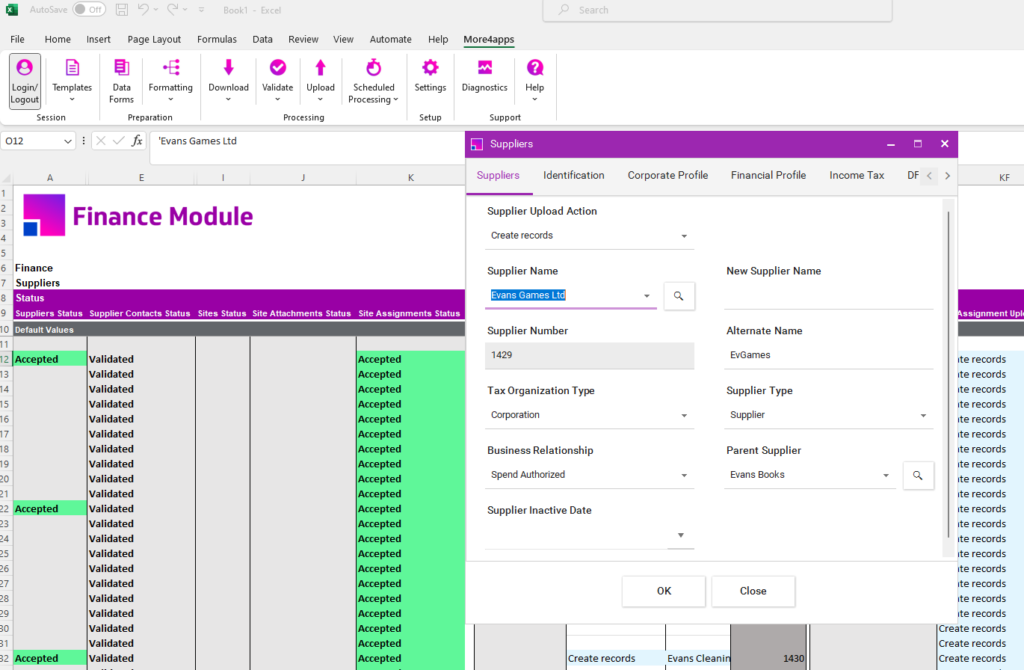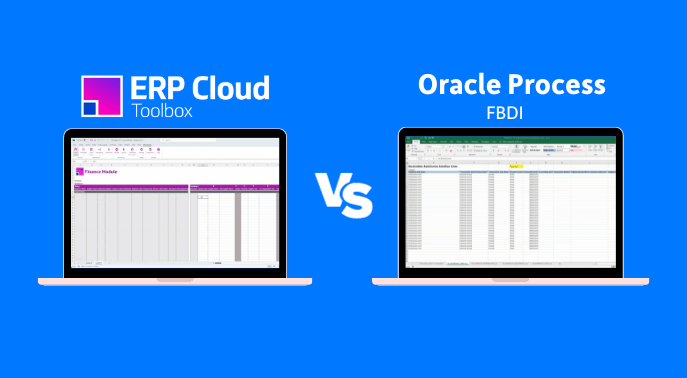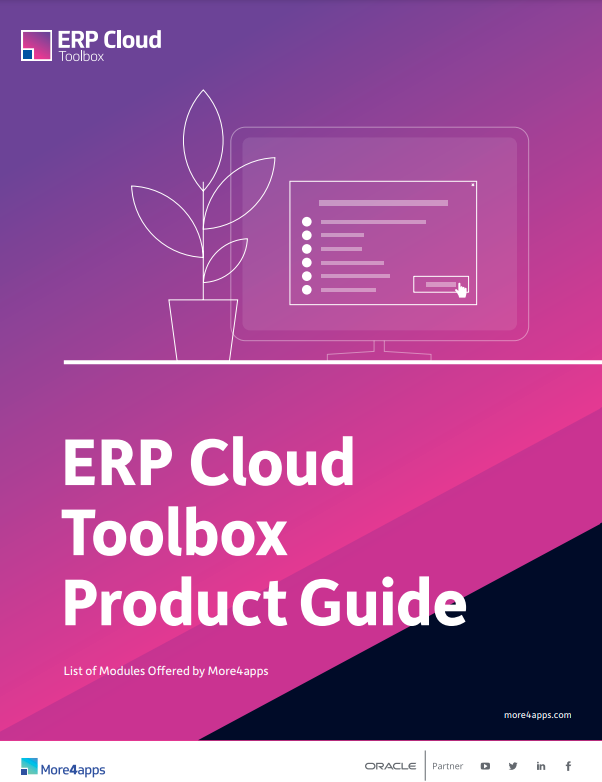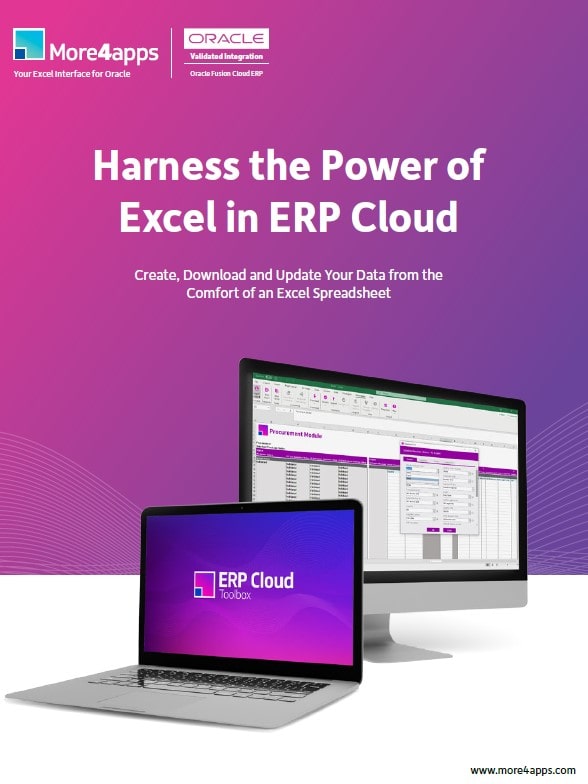FBDI: How to Simplify Your Supplier Creation Process
November 7, 2023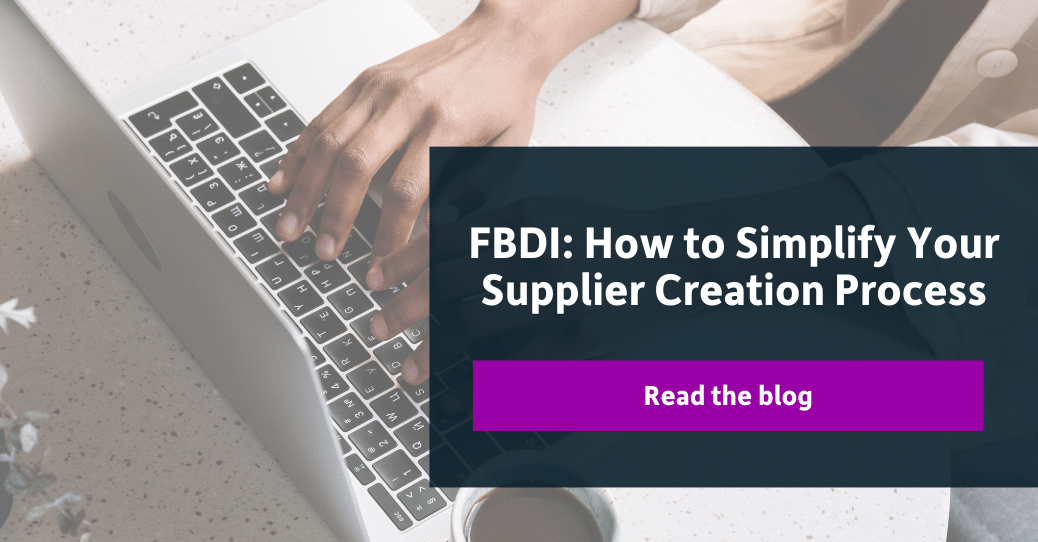
Streamline Supplier Creation in Oracle Fusion Cloud
Whether you use FBDI or are exploring it as an option to manage your Supplier data, you more than likely have already felt the pain of having to create your data in a separate Excel workbook.
In addition to creating each section of your data as a single upload, you must ensure that your formatting aligns with predefined Oracle templates and standard Excel CSV file format rules.
This manual process is tedious and prone to errors, which impacts an organization’s supply chain and financial operations.
Interface vs. Real-time
FBDI populates individual interface tables before attempting to perform advanced data validation; should errors occur, the interface table data needs to be corrected or deleted before re-attempting the upload.
Typically, FBDI power users perform bulk data processing where real-time feedback is not required. More4apps modules use real-time processing via the Fusion web services and perform pre-validation before writing data anywhere.
Errors can be viewed and corrected in the same Excel worksheet and results get returned after successful uploads. Fusion web services are helpful tools but don’t perform bulk uploads as quickly as FBDI.
How to Create a Complete Supplier Record using FBDI
FBDI templates that create/update Supplier records in Fusion are all based on individual interface tables. To interface into all eight Supplier sections listed below, data owners must use eight separate workbooks and perform eight different imports.
In addition, reconciliation processes need to be run consecutively ensuring import exceptions get resolved before moving to the next import.
- Import Suppliers
- Import Supplier Addresses
- Import Supplier Sites
- Import Supplier Site Assignments
- Import Supplier Attachments
- Import Supplier Business Classifications
- Import Supplier Contracts
- Import Supplier Products and Services Categories
The Supplier name value is the link between the Excel templates, which must match exactly across each workbook. Other sections, like Supplier Site Assignments, have additional mapping of name values that must also match exactly.
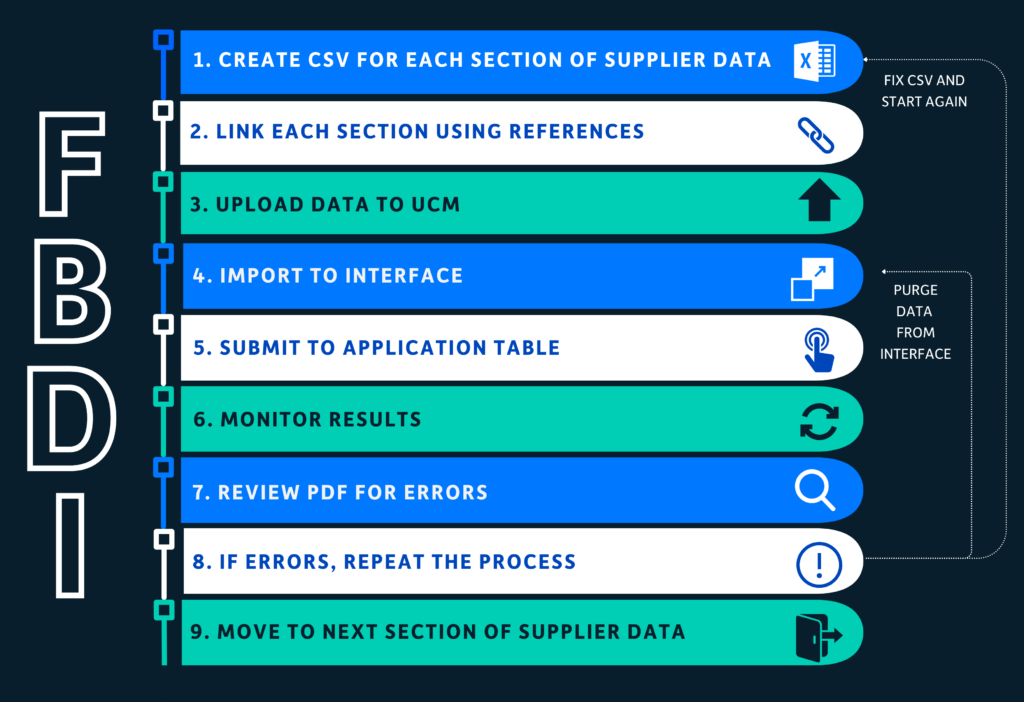
The parent object import process should have been run, and the records successfully imported, before attempting to interface related child data. An attempt to import the Supplier Site, for example, will result in an error if the Supplier hasn’t been imported.
FBDI is a manual process, which requires users to comply with predefined templates and a sequential process for data imports. This makes FBDI a much less suitable tool for reflecting real-time updates and achieving operational efficiency.
How to Create a Complete Supplier Record using More4apps
- Download template (link to simplified template). Columns can be hidden, deleted, or moved, but not renamed.
- Populate Supplier information using standard Excel function/formatting. All sections are in one workbook and are linked in either a hierarchical manner, or by using exact matches on names.
- Use the More4apps Integrator ribbon option to validate and upload the records to the Supplier application tables.
- Review the worksheet for any exceptions and correct the data in the worksheet before re-attempting the upload.
Conclusion
In conclusion, managing Supplier data is a critical aspect of an organization’s supply chain and financial operations. Traditional methods like FBDI, while effective, can be a cumbersome and error-prone process, especially when dealing with complex data structures and multiple sections.
This method requires extensive manual effort, careful adherence to predefined templates, and a sequential process for data import, making it less suitable for real-time operations.
On the other hand, More4apps provides a more efficient and streamlined approach to creating and managing complete Supplier records. With a user-friendly, all-in-one workbook format and real-time processing capabilities, it offers a more convenient and error-resistant solution.
Users can quickly validate and upload data, correct any exceptions within the same worksheet, and achieve a smoother and more efficient Supplier data management process.
In today’s fast-paced business environment, where agility and accuracy are paramount, More4apps offers a compelling alternative for organizations seeking a more efficient way to manage their Supplier data, helping to improve supply chain operations and financial performance.
Additional Resources
Webpage
Oracle FBDI and ADFdi vs. More4apps: Data Loading Alternatives for Fusion Cloud
Visit our website to learn more about our solutions for Oracle Fusion Cloud Applications or connect with an expert.
Connect with us on our social networks: @more4apps
